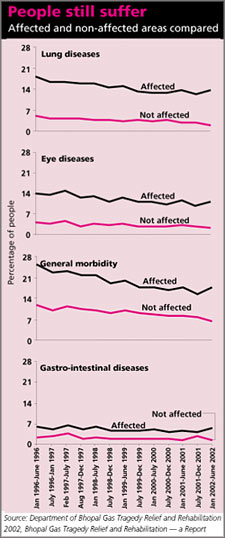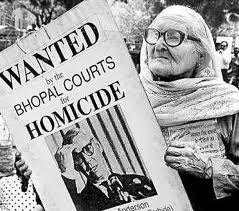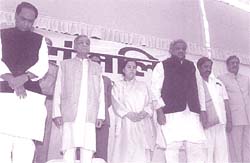1 lakh Bhopal gas victims petition PM
JUSTICE continues to elude the surviving victims of the Bhopal gas tragedy in 1984 when 40 tonnes of the poisonous gas, methyl isocyanate, leaked from a Union Carbide factory in the town and other toxic chemicals leached into the ground. This injustice haunts not only lakhs of victims of the industrial disaster, one of the world's worst ever, but also Dow Chemicals, the company which bought Union Carbide and thereby acquired continuing public hostility to Union Carbide's shoddy response to the tragedy. Legal and bureaucratic delays in estimating the actual number of those affected by the disaster is partly to blame. A mass delegation of gas victims from Bhopal led by the Bhopal Gas Peedith Mahila Udyog Sanghathan (BGPMUS) arrived in New Delhi on Saturday to present a memorandum to Prime Minister Manmohan Singh. The gas victims seek support from the Government of India for their application pending before the Supreme Court for fivefold enhancement of the settlement fund, originally pegged at $470 million by a SC order of February 1989. That order estimated the number of the gas tragedy victims to be 1,05,000, including 3,000 dead. However, the Union of India's submission before the Supreme Court on 19.03.2007 has revealed that, as on February 28, 2007, over 5,73,537 victims, (including 5,294 "proven' death cases and 10,007 other death cases, where claims have been converted from death to injury), have been paid compensation. This was no doubt achieved by spreading thin the Settlement Fund meant for 105,000 victims. At the time, the settlement fund was worth Rs 712 crore. Depreciation of the rupee has increased the rupee equivalent amount three-fold. But the number of victims compensated has gone up more than fivefold. And till now, practically no action has been taken for remediation of the poisoning of soil and sub-soil water sources. The cost of these operations has not been determined and no one has come forward to bear these costs. BGPMUS had mobilised over one lakh individual petitions from the gas victims, saying that there is prima facie evidence for reviewing the basis of the settlement.








